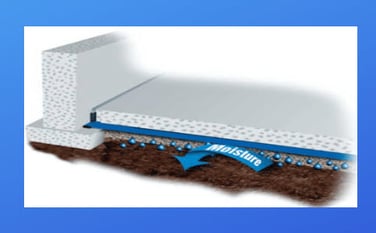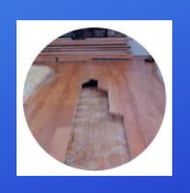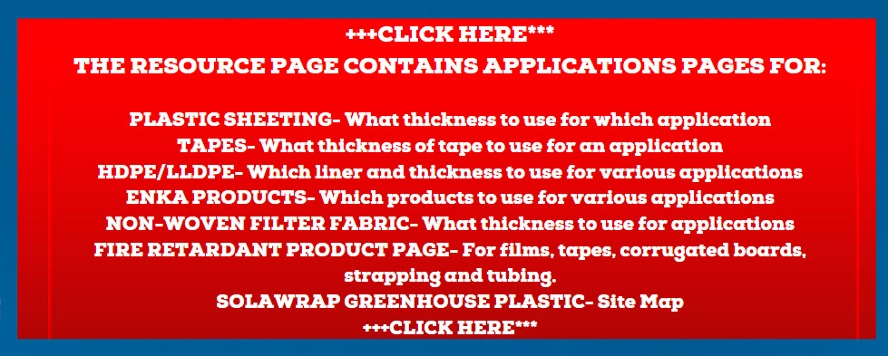The Selection of a Water Vapor Retarder
CONSIDERATIONS IN SELECTING AN EFFECTIVE WATER VAPOR RETARDER FOR YOUR PROJECT

When the proper vapor barrier/retarder is correctly installed, it will provide an economical and effective method of limiting water vapor from traveling upward through the concrete slab-on-grade or below the exterior grade. Without the proper vapor retarder, excessive moisture will adversely affect moisture-impermeable flooring causing problems such as, warping, rotting or carpet, decay of wood floors, terrible offensive smells and fungi growth.

Before you buy or specify a water vapor retarder, separate what's "nice" to know, from what must be known to make your decision. The process of selecting a vapor retarder includes two key steps:
Selecting a water vapor retarder best suited for your application.
A vertical wall vapor retarder may demand a more puncture resistant barrier because of design conditions such as the type of backfill material and the backfill method used. Another condition to consider is the type of compacted sub-grade used on a slab-on-grade or a sub-grade application. If sharp crushed rock is specified because of availability, or design, a more puncture-resistant vapor retarder will be required. Typically, river-run (washed rock) will cause less damage to the retarder. In general, more demanding conditions will require a Class A or B (ASTM E-1745) vapor retarder. Please refer to the chart qualifying each of our vapor retarders.
Insist the vapor retarder you're specifying meets ASTM E 1745 performance requirements! Ask yourself during the selection process:
- Has the vapor retarder been tested for resistance to deterioration from contact with soil and still maintain a 0.3 Perm or less (ASTM E 154 Section 13)?
- Does the vapor retarder meet the minimum tensile strength per classification as listed in the table below?
- Puncture strength is also a very critical factor in determining if a retarder is capable of withstanding demanding installation stress. Does the vapor retarder meet the minimum puncture strengths required of an A, B or C classification?
- Does the manufacturer provide proper certification of independent testing, correct classification and product labeling identifying class A, B or C?
- Have you determined what classification you will require in order to meet your customer's performance expectations?
ASTME 1745 Requirements
|
Water Vapor Permeance(E 154,Section 7 of F 1249), max |
Tensile Strength (E 143, Section 9), min |
Puncture Resistance (D 1709, Method B), min |
Class |
|
.30 perms |
45.0 lb/in |
2200 grams |
A |
|
.30 perms |
30.0 lb/in |
1700 grams |
B |
|
.30 perms |
13.6 lb/in |
475 grams |
C |
Below are some vapor barrier for your consideration.
- Poly Scrim Crawl Space Vapor Barrier: String reinforced Crawl Space Liners
- Enkavent 6128- Radon Control
- Crawlspace 2000 : A white 20 mil string reinforced liner 12' x 100'
- Poly Scrim 12 Antimicrobial: 12 mil liner 12' x 100'
Recommended Tapes:
-
- Ultra Perm Tape: Exceptionally aggressive all weather tape
- Butyl Seal Tape-Double Sided Tape Used to attach the plastic to the foundation walls of the crawl space.
- Vapor Seaming Tape Used to seam the vapor barrier plastic together in the crawl space. Minimum overlap of 6 inches.

Call ![]() for more information. Thank you!
for more information. Thank you!




